This post contains affiliate links. We may get paid an affiliate commission if you buy something or take an action after clicking one of the links on this web page.
Today I am interviewing Ban Tang of Ban Tang Knives. Ban is a custom knifemaker from San Jose, California and is truly a student of the art of knifemaking. He is completely dedicated to making the best possible knives he can, and it shows in every way.
I remember the first time I saw his knives, and the precision and attention to detail blew me away. If you are unfamiliar with his work you are in for a treat, and if you are already a Ban Tang Knives fan, well I hope you enjoy learning a little more about this great up and coming knifemaker.
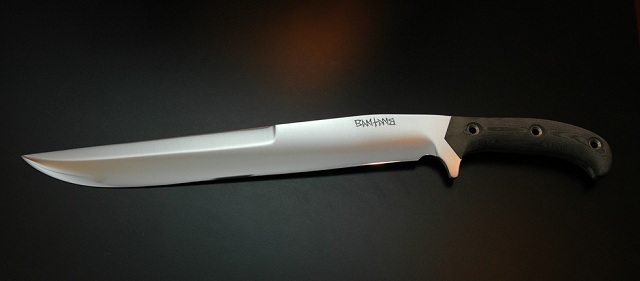
Ban, welcome to the site. You make some amazing pieces. Not only are your knives “stupid sharp” but they are “stupid sexy” as well. What started this madness?
I was always intrigued by sharp things since I was a kid. I’ve had a passion for knives since I can remember attempting to make knives using creative materials. My first real knife came around 1998. I was inspired by RJ Martin’s Kozuka. I purchased a Grizzly belt grinder and made my own Japanese cord – wrapped knife out of D2. While my passion for knives has never waned, it wasn’t until 2007 that I began to pick up knife making again, this time more seriously. I started doing modifications, regrinds for Busse knives and within a short period of time, I purchased my KMG. I also started to create my own designs with the BT4 being my first standard production knife. It’s a design that I am most proud of and continues to be a sought out knife even today. Everything I know about knives has been self taught. I owe thanks to Ron Hembrook as he took me under his wing and through emails he graciously gave me tips and pointers about knife making and the proper equipment needed. I sadly found out that Ron Hembrook recently passed away on May 6th, 2010. He was a true giver and I will miss him.
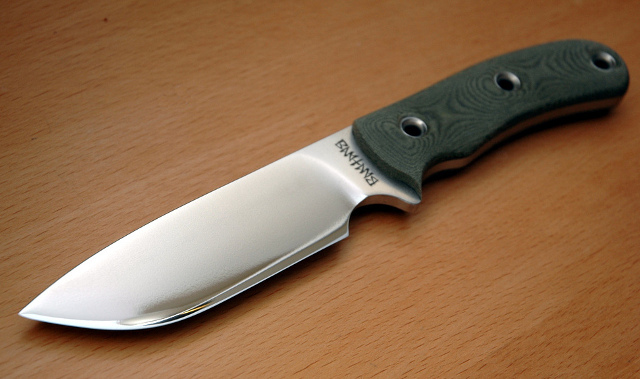
I am real sorry to hear about your mentor. I’m sure you continue to make him proud and one day you may be able to pay it forward and mentor another aspiring knifemaker.
I know you are something of an outdoorsman, so perhaps you can speak a little about that.
I wouldn’t exactly call myself a outdoorsman but I do love the great outdoors. I love hiking, camping, and enjoying the beauty of mother nature. I am an avid fisherman and very much enjoy hunting even though I don’t get to do those things very often these days. As a matter of fact Fishing and Shooting are passions of mine besides knives.
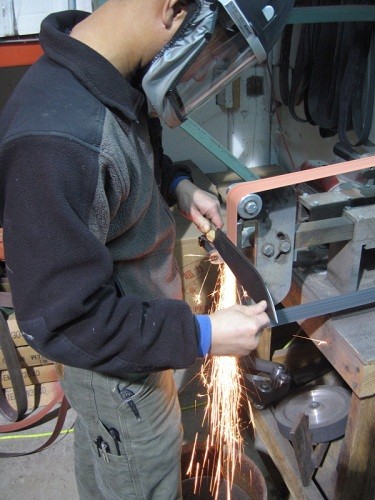
That is awesome. I think these kinds of passions can really help design useful tools. I would be interested to hear about your philosophy towards knifemaking. What inspires your designs and craftsmanship?
For me, I believe that a knife has a function. It has to cut and it has to cut well. If it doesn’t cut well then it’s not much of a knife. I go to great lengths to ensure that every one of my knives is as sharp as they can be for their given design.
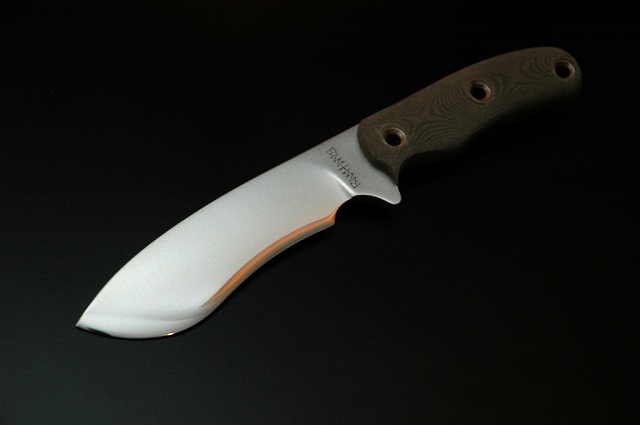
My designs are typically driven by the function it needs to serve. The devil is in the details. A good knifemaker is someone who masters the details of the basics. I get great satisfaction delivering a beautiful, functional, sharp knife to each one of my customers. I appreciate the feedback and the inquiries as they inspire me to continue to refine my skills and styles to develop better quality knives.
You are known for your incredibly sharp blades. Without giving away any trade secrets, can you provide some insight into your sharpening process?
Here are some of my thoughts on sharp.
When most people think of sharp they are thinking or referring only to the actual edge bevel and how fine the edge has been polished. I am known for my high polished convex edges but that is only part of the story.
There are two main factors that come into play when we are talking about sharp. First is the primary bevel (PB) and second is the secondary bevel (SB) or more commonly known as the edge bevel. Primary bevels are typically flat, hollow, convex, chisel, or a combination. Edge bevels are typically V or convex.
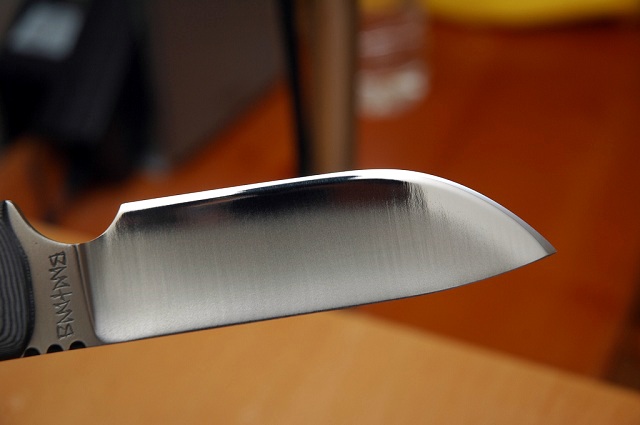
The combination of the primary bevel and secondary bevel makes up edge geometry which is our primary concern. In order to get a truly sharp and efficient cutting edge geometry the PB and SB must be properly balanced. This will usually be dictated by the function and cutting tasks at hand. A properly sharpened edge bevel can only cut efficiently as the primary bevel will allow and vice versa.
Balancing the edge geometry takes a bit of experience, skill, and sometimes trial and error. There is not really a best cutting geometry for all tasks. The geometry required to chop through seasoned hardwood without damage on a chopper is very much different than a geometry that is required to slice thin slivers of tomatoes for a kitchen knife.
Bottom line. Edge geometry is KEY.
My sharpening process can be found on this thread.
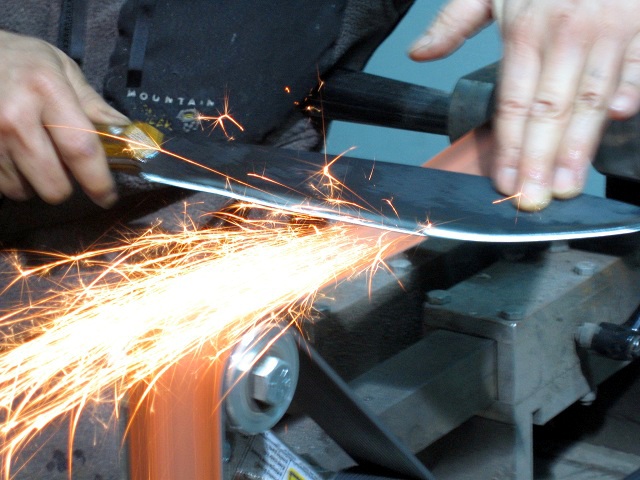
Very cool, Ban. As an end user, I don’t always think about these kinds of things when handling a knife. To get your insight on this kind of stuff is very valuable. (Also, I highly recommend checking out the sharpening link – very interesting reading for those curious about exactly what it takes to get that hair popping edge.)
Your love of reverse edge (Pikal) knives and Hawkbills is obvious. What attracts you to these somewhat uncommon blade shapes?
Growing up in a rough environment I’ve always had an affinity towards self defense. My opinion is that the little Reverse Edge knives are easy to carry, deploy, and are super potent in CQB (close quarter combat – Ed.) situations. The Hawkbills are also super efficient cutters for those that prefer a more standard grip orientation. And of course the Reverse Edge and Hawkbills look cool as hell. 😉
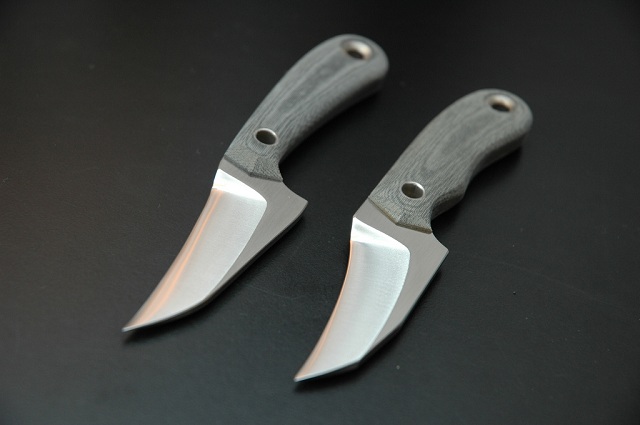
No doubt. I think they are striking designs (…pun intended?) and from what I have seen, they have earned you a lot of fans.
It’s no secret that you build some serious cutters, but I think it’s especially interesting that you are getting into building cutting competition knives. What are your plans as far as making these competition cutting knives?
I consider myself a fairly new knife maker and still very much honing my skills. I am interested to see how well my knives do in comparison to some of the more respected makers in the industry. Again this just shows my curiosity in every kind of knives out there. My passion for knives is not specific to just one type. I will continue to experiment and refine my competition cutters as I gain more knowledge in that area.
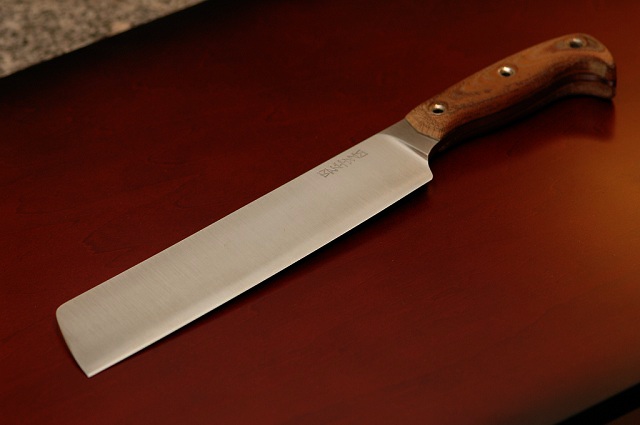
I’ve seen a lot of household names in the knife industry making competition knives and some even compete themselves. I think it is a great way to test your skills and learn first hand how to build high performance knives. I hope to see some videos of you blasting through 2x4s soon.
I notice that you like to experiment with different steels, in fact your whole approach to knifemaking seems very adventurous. Are you looking for the “holy grail” of steels or are you just trying new things?
Knifemaking is a passion and a study for me. My goal is make the best knife that I possibly can. I am constantly experimenting and trying to make things better. I like to experiment with different steels because it is one of the elements to help create better knives for their intended purposes. I have personal favorites but I don’t think there is a best steel.
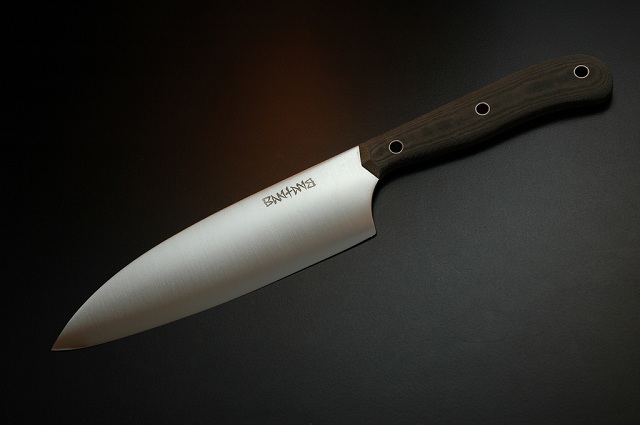
The fact that you are continually trying to push the envelope is exciting and I look forward to following the evolution of your knives.
I also noticed that you have done some work with titanium where you apply carbide to the edge. What is that all about? Do you think we will see more of these titanium knives from you in the future?
Titanium has a pretty bad rap as a knife blade material. The main reason being that it is relatively soft and does not hold an edge very well compared to a good quality steel. It does have the advantage of being much lighter than steel and is non-reactive in most reasonable environments. Titanium knives become a very viable option when you pair up good edge geometry with a carbide edge. Tungsten carbide is very wear resistant and improves the edge holding a great deal. A carbidized Ti edge is quite toothy and very different than a fine steel edge. It can get hair scraping sharp but not hair splitting sharp. However, it can hold that working edge for a good while. Sharpening is very simple since carbide is applied only to one side of the edge. As a matter of fact it is almost self sharpening because the softer Ti slowly wears away exposing the carbides on the edge. A quick strop or two on the non carbide side is usually all that is required to
renew the edge.
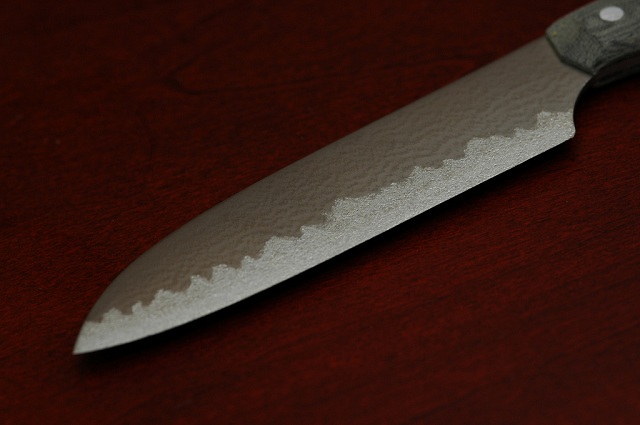
Carbidized titanium is very suitable and possibly even ideal for small ultra lightweight neck knives that are impervious to rust. I also find it pretty ideal in the kitchen environment where edge degradation from corrosion is a concern for most steel knives. I am still testing and experimenting with carbidized titanium and so far it has held up very well to daily cutting chores. You will definitely be seeing more carbidized titanium knives in the future.
That is awesome. I honestly have not heard much about carbidized titanium before so I am definitely looking forward to seeing some more of these knives.
Ok, one last question – what are you currently carrying?
My current EDC is a small Titanium Cord Wrapped Pikal. I will probably switch it up to a Titanium Wharnie or Hawkbill in a week or so. 😉
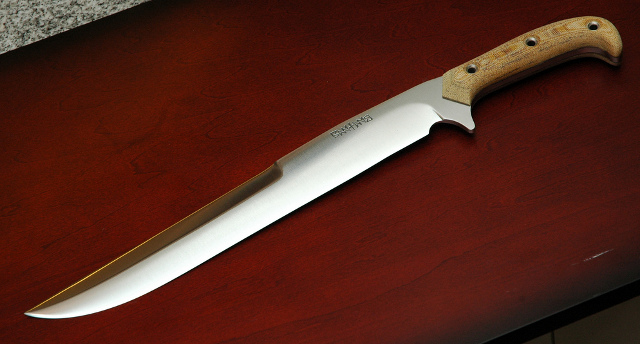
See I KNEW you were into those weird little blades! Thanks again for the awesome interview Ban, I wish you the best of luck in your knifemaking endeavors!
You can learn more about Ban’s work by checking out his website, BanTangKnives.com, checking out his subforum on bladeforums.com or by contacting him directly via email.
Great interview! It’s interesting to hear what happens behind all the madness! Keep it up, Ban!
just read your site site your quite the craftsman im a welder by trade 30 years 12 in the automatic electric gate business taught by my dad he was a master welder and fab. man all his life he passed 3 years ago in November. I was recently going thru his lockers in his shop and found 2 matching sword like knifes he had been making and never finished ill send you a picture and what I was wondering if you could make some handles for these 2 knifes? ill be sending you these photos next week some time ty for your reply back to me Michael
Hi Michael. Ban’s official website is http://bantangknives.com/wordpress/
I don’t think he browses the comments section on this interview very often, so my advice is to go ahead and reach out to him directly.
Dan